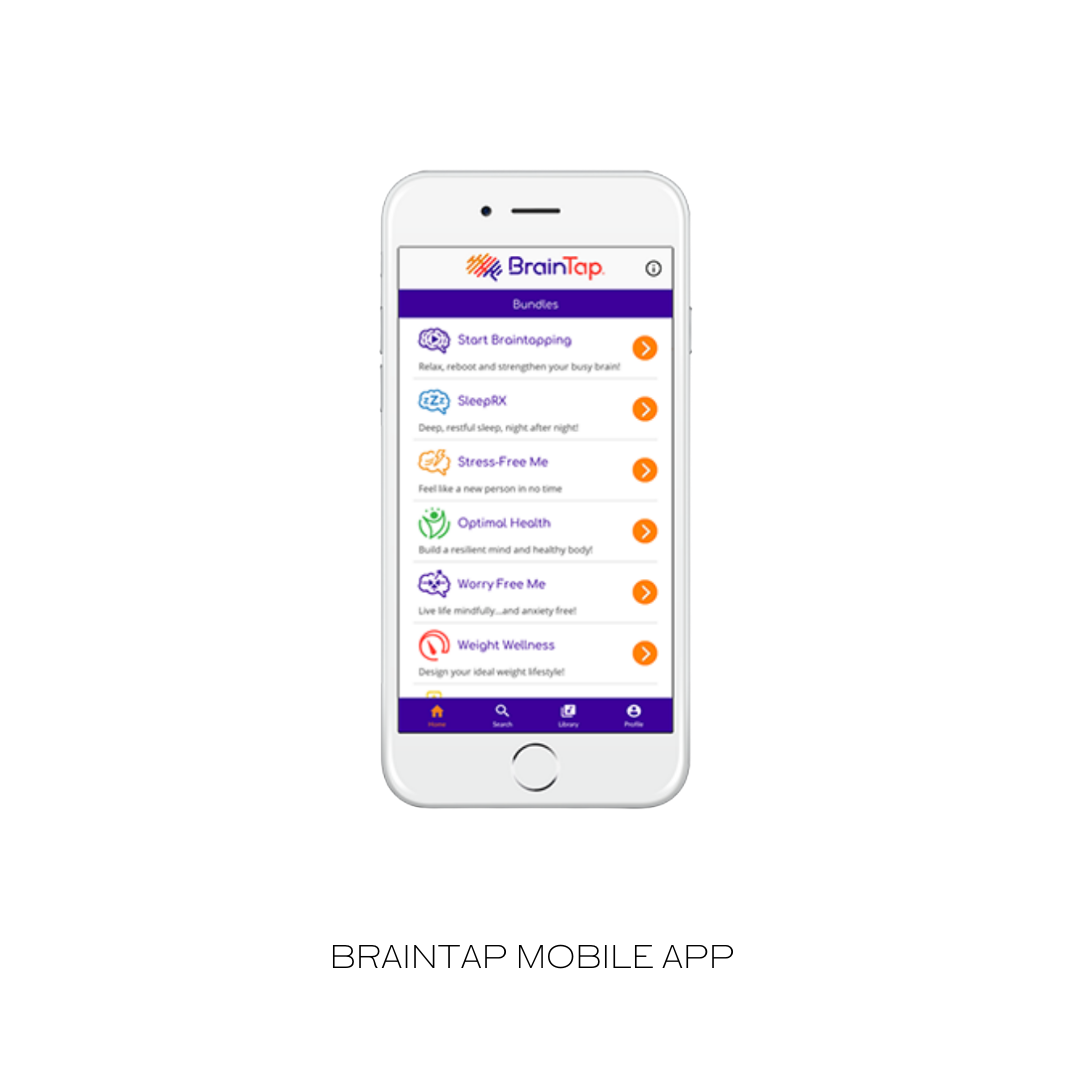BrainTap


Tap Into a Unique Approach to Brainwave Entertainment
BrainTap’s guided meditation helps restore your brain’s natural balance so you can feel relaxed, rebooted and revitalized. Backed by neuroscience and research, BrainTap’s technology has helped individuals who experience high stress, difficulty sleeping, low energy, and other lifestyle challenges.
BrainTap’s technology has been extensively tested to create the perfect symmetry of sound, music, and spoken word for brainwave training and relaxation. Each session using a BrainTap unit provides your mind and body with all the benefits of meditation without the disciplined effort.
BrainTap’s neuro-algorithm produces specialized sound to synchronize brain waves. This results in full-spectrum brainwave activity. Each session is encoded differently to ensure maximum neuroplasticity. Neuroplasticity is the brain’s ability to reorganize itself by forming new neural connections, resulting in a flexible and resilient brain.
The Four Elements of BrainTap
BrainTap technology relies on the science behind four key elements that enable the sessions to induce brainwave entrainment.
- Binaural Beats - When two different tones, separated in frequency by only a few Hertz, are introduced the brain perceives a third, unique tone. Binaural beats work by creating this phantom frequency, which the brain then mimics. BrainTap uses frequencies that your brain naturally follows, allowing you to experience a deeply relaxed state.
- Guided Visualization - Visualization has been shown to have the power to affect mental states and improve physical performance on the body. Guided visualization and spoken word combine to help the user envision a consistent image of the results desired from the session.
- 10-Cycle Holographic Music - The 10-cycle holographic music used during BrainTap sessions produces a 360-degree sound environment. In this environment, visualizations become more real to the mind.
- Isochronic Tones - Equal intensity pulses of sound separated by an interval of silence are known as isochronic tones. Since isochronic tones have such a distinct nature, they are particularly easy for the brain to follow.
What Happens When You Use BrainTap
When using a BrainTap unit, a number of different activities take place in your brain and your body:
- The electrical activity of your brain is being altered. as the light and sound frequency inside the unit changes, so does the frequency in your brain.
- You are being dissociated from the normal stresses of your life. Dissociating is when a person disconnects from one's thoughts, feelings, memories or sense of identity. When playing any of the BranTap sessions on the mobile app you get drawn into the present moment and let go of thoughts relating to your daily hassles, worries, threats or anxieties. These sessions help stop the unhealthy mental “chatter.” Dissociation usually begins in four to eight minutes with the frequency following response that is built into each session on the mobile app.
- Your limbic system is being stabilized. The limbic system is the part of the brain responsible for our behavioural and emotional responses . While the limbic system is being stabilized, your body is calmed, your breathing becomes rhythmic, and your muscles relax.
- A number of neurotransmitters are being produced. Neurotransmitters are seen as the body's chemical messengers. People with depression are known to have low levels of serotonin and norepinephrine. Serotonin is a chemical mostly associated with positive feelings of well-being, while norepinephrine is associated with alertness and energy. BrainTap’s light and sound stimulation boost brain levels of serotonin, beta-endorphins, and norepinephrine to improve overall well-being.
- Cerebral blood flow is being increased. Cerebral blood flow is connected with many forms of mental disorders, including anxiety, depression, and impaired cognitive function. As we age, cerebral blood flow naturally decreases, often causing cognitive decline.



